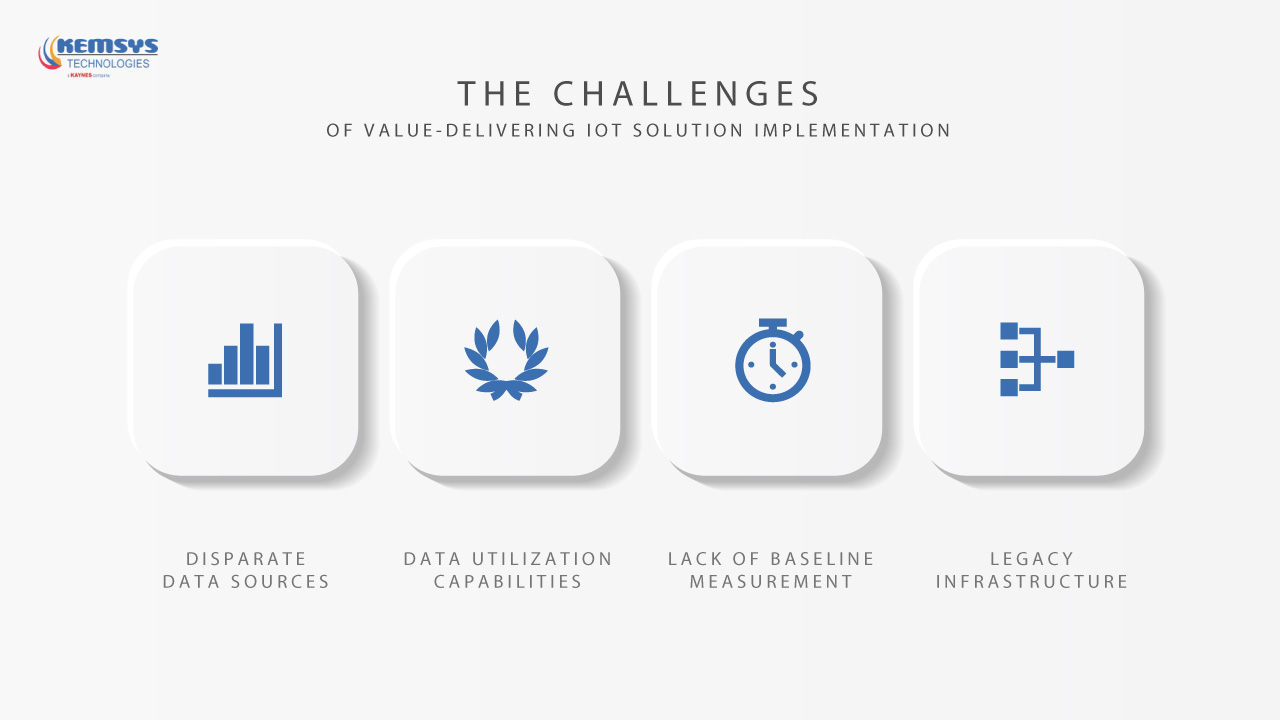
Leveraging IoT for Better Service Quality, Customer Experience, and Warranty Management
Now that the map of challenges is clear, the question shifts to – how companies can work around this set of issues? An intelligent and well-connected IoT platform can solve most of these challenges. The right IoT platform will provide functionalities and benefits like:
- End-to-End Deployed Product Management
Technicians, analysts, and authorized vendors will be able to discover the deployed products and even register the missed ones onto one federated platform. The platform will enable remote assessments and management of connected products. - Compliance and Risk Management
While the customers are usually well-intentioned, they might breach the usage threshold as directed in the product manual or established in the Service Level Agreement. With connected devices reporting real-time data, such threshold breaches can be recorded and used to mitigate faulty claims. The right IoT solution will enable this process by qualifying the warranty claims early in the workflow before the technicians and resources are assigned to the task. - Proactive Servicing with Predictive Analytics
Proactive maintenance can slash servicing costs by a considerable factor. As reported by Houston Dynamics quoting a Plant Engineering study, proactive maintenance can lead to 75% decreased downtime and 55% cost savings. Plan vanilla IoT platforms might have data aggregation and visualization capabilities. But, without contextual intelligence, they cannot leverage the data and predict downtime for proactive maintenance. The right IoT platforms are optimized for such functionalities. - Service Quality Optimization and Product Assessments
With the IoT solution at the center of the servicing and maintenance lifecycle, the entire process can be improved. After the service request is vetted and filtered, apt technical resources can be allocated for field duty with the necessary equipment. This reduces reverse logistics issues and costs redundancies associated with repeated visits for the same service query.
Moreover, the assigned field service engineer can be equipped with asset issues and insights, custom product details, and other specifications necessary to deliver an effective field service. Once the repair & maintenance engagement is completed, the same IoT solution can provide access to service quality assessment. Whether it is the matching quality between the service request and the technician or the lead time to fix the issue – each factor can be assessed with granular details. This acts as both a diagnostic tool and a deployable solution for enhancing service quality without increasing the costs.
The data streams reporting on service issues with certain product families can also show gaps in product quality assessments. Even fundamental trend analysis on which products have concentrated servicing costs can help the company optimize its suite of offerings. - Growing Revenue Streams
The most significant advantage for IoT solutions is the set of revenue opportunities. Such solutions have the capability to collect real-time data related to asset health, Operation, maintenance, and performance. OEMs can also use the IoT for product R&D, design enhancement, and performance improvement. Putting it all together, IoT can be leveraged for tailored solutions with varying degrees of asset management that maximize uptime and deliver value to customers.
Conclusion
The right IoT solution can have a ripple effect on an OEM’s warranty management ecosystem. For deploying the right sensors to aggregating the data, performing contextual analysis for predictive maintenance, and assessing end-to-end customer requests & service quality – IoT can make service quality optimization, warranty management, and connected customer experience more accessible for OEMs.

